
Companies are not achieving results: more than 50% of organization’s failing strategic initiatives are addressable from within. This means it is within the power of the leaders to change the outcome and increase the number of strategic objectives they achieve. Businesses are not working as they should be and the leadership knows it. They attribute the failure of their strategy to their people. They say “People don’t execute our strategy properly”. But the leadership hasn’t given serious consideration to the execution of their strategy.
You can’t introduce new goals and initiatives and not make the necessary shift in your resources, too. That includes the time of your employees. If you want your people to pursue a new goal, free their time from the activities that contribute to old goals and not new ones. Put more thought into what actions should your people take to pursue your goals and what actions should they stop taking to be able to do it. Otherwise, it’s business as usual.
If there’s one thing to take from this report is that strategy should be designed with and for your employees.
Here’s to people-first business practices,
Karim
During the pandemic, work became a bigger part of our lives. It grew until it dominated our daily lives almost completely. Despite the extended hours, better or more results didn’t occur.
People are spread too thin, 52% feel burned out, trying to do too many things, instead of focusing on doing the right things. Since the pandemic, 53% of the employees that work from home report working longer hours as well as 27% of on-site workers. People lost their ability to unplug from work and 96% end up checking emails outside of regular work hours.
Leadership needs to take notice. If people’s performance suffers, strategies can’t be executed properly. At the altar of enhancing productivity, prioritization gets sacrificed and focus is nowhere to be found.
This is nothing new, the concept of being more productive instead of working longer hours has been a buzz for years.
The vision and the reality of day-to-day work end up disconnected. Teams are detached from the big picture and execution is almost absent.
In 2020 over a million apps were introduced via Google Play alone and nine out of the ten most downloaded apps were social media and communication apps. Social media and technology have annihilated distance and time allowing us to craft, send and receive messages in a matter of seconds. Our access to information in the last couple of decades has been unmatched by our past. Entire encyclopedias are just a few taps away.
Naturally, one would assume that we are well informed and connected. And we’re all moving in the same direction.
That’s not the case.
We are suffering from information abundance, which affects our decision-making performance, and the skill to distinguish between irrelevant and useful information is underdeveloped.
These problems are evident in organizations, too. Leaders don’t know how their teams are performing each day, employees don’t know their organization’s strategy and the information flow stagnates.
“Because of this lack of alignment on strategy, we are used to measuring productivity as tasks done per hour or per day or per a certain, arbitrary time interval. As a result, we tend to spend our time doing easier, sometimes urgent, but usually irrelevant stuff to get that feeling of being productive, busy. While at the same time we leave the most important and harder tasks for later. Things that demand much more time or intense concentration or are harder to measure or are simply inconvenient or unpleasant. The truth is, productivity is much more than being busy. It’s doing exactly those harder tasks.” - Karim Zuhri, COO @ Cascade
Distractions in work have been increased along with the communication costs among co-workers. The average team uses at least 4 collaboration tools, however, 48% of organizations say that ineffective communication between team members is still their biggest handicap to teamwork.
All those communication tools eat away at the resources and people lose valuable time trying to stay up to date. At the same time, whole departments operate isolated, costing millions of dollars.
Staying focused on the destination and aligning the whole organization are not about 10 different communication and productivity apps. It’s about empowering teams to get the right information at the right moment and understand what they need to do for the organization to move forward.
Those who do not manage to adopt a fully collaborative and focused approach throughout their operations, like customer experience -one of the best of strategic performance indicators- suffer multiple and costly consequences.
Due to high communication costs and an ever-changing market, businesses are focused on reacting instead of executing strategies. Thus, strategies went from being actionable to a “must-have” piece of paper created at a C-level meeting and never to be looked at again.
People have lost faith in the strategy process, as was evident in Strategy Fest 2021, where a mere 10% of respondents agreed that their organization’s ability to execute on strategy was “Really Effective”.
It’s simply because strategies rarely get executed.
The majority of strategies are bound to fail from the start due to the nature of their development.
The traditional strategy development process is unreliable and rigid - a group of leaders drafting plans isolated from teams. It doesn’t serve the need of adapting to constant change or the need to distinguish between the right actions and the irrelevant ones.
An alienated strategy leads to employees doing more of the wrong work. They might be constantly busy, but they’re not doing what your business needs to grow.
That’s why we, at Cascade, are on our way to redefining productivity and strategy execution. We want businesses to succeed and employees to not feel overwhelmed.
The secret lies in better strategy planning, collaboration, and doing the right things instead of doing more.
“Productivity should be doing the right things first. It should be focusing on the essential, the real drivers of growth. We should encourage and incentivize people to choose their activities carefully. We need to prioritize more concisely and enforce those priorities on every level. I don’t mean micromanaging. People who are closer to the work know what to do, we just need to remind them the “why” and they will find out the “how” and the “when”. They’ll know exactly what to do and what not to do. We need to create a space where we’ll be able to reflect on our priorities and have the freedom and the time to choose our next actions wisely. And the only way we can achieve this is by approaching productivity through strategy.” - Karim Zuhri, COO @ Cascade
Successful organizations adapt their strategy to the changing environment fast. Their front-line employees participate in the discussions concerning the direction of the company. They obsess over the needs of their customers and they deliver an exceptional product. Successful organizations have a model that evolves constantly and feeds into the experiences of their customers. Real-time data is accessible and strategic decisions are made based on trends analysis and past performance.
There is a key lesson here: Strategy is not a linear process, nor a one-person job.
Strategy is a never-ending cycle. There is no universally optimal starting point nor is each stage of the cycle explicitly distinguished. Every organization has its own method and its own tools for developing and implementing its strategy. Every single stage of the strategic management cycle is tailored to the organization’s identity. However, all great strategies go through every component of the strategic management cycle successfully. And they become great because they sort through the irrelevant and focus on the right actions at every level of the organization. That’s how they breed success.
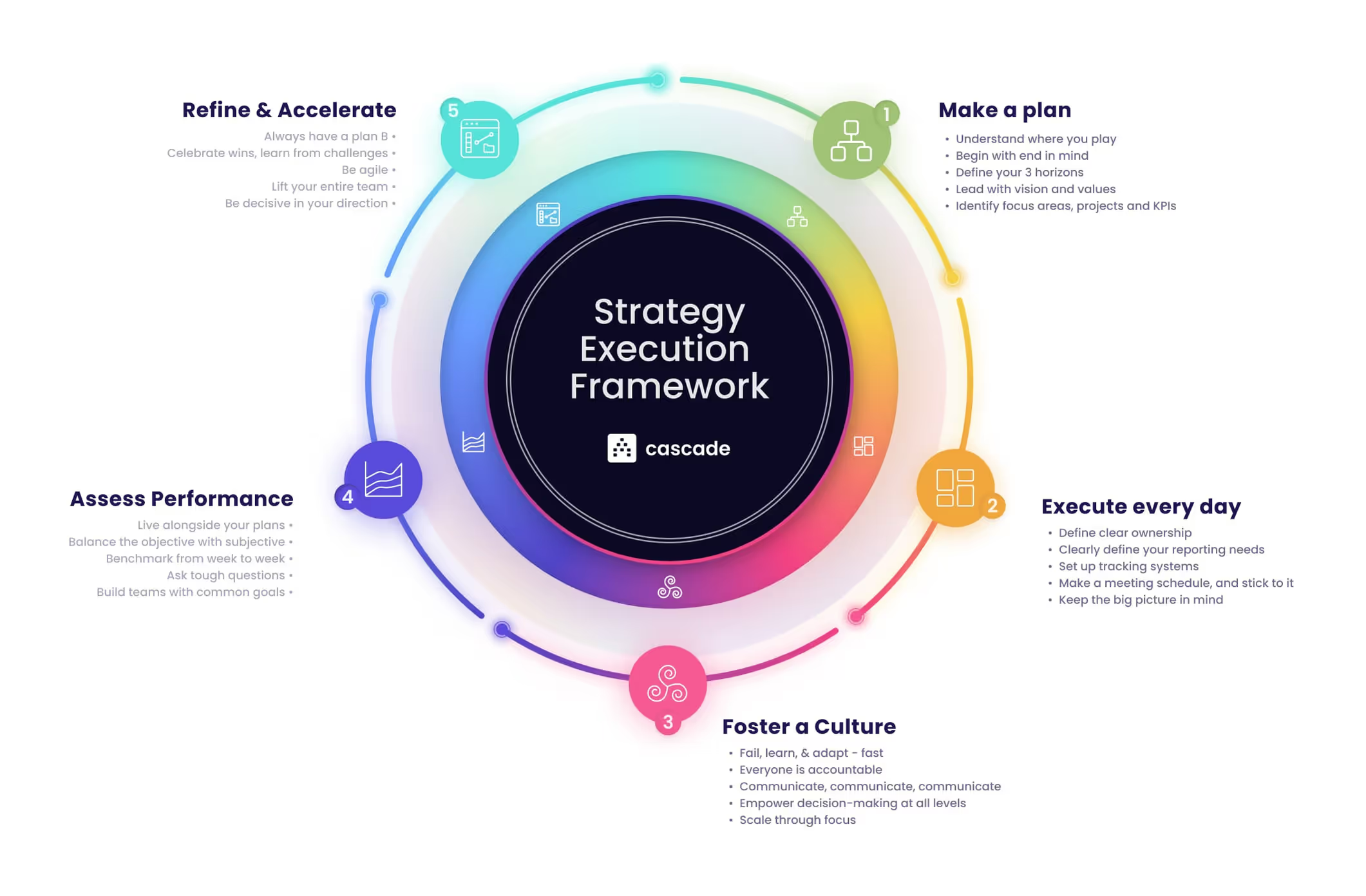
Strategy is a journey. An ever-evolving cycle that includes regular and rigorous retrospection and treats the execution process as a learning concept.
In other words, you don’t need a perfect plan, but a perfect execution of the plan. And not in terms of efficiency, but in terms of learning capabilities.
Of all the assets of an organization, people are the only ones capable of learning. Thus, if you focus on people, you’ll build an organization that leverages the execution process to learn and adapt fast.
Without answering the question “Who are we?” every other decision will happen in a vacuum and the organization will end up like butter spread on too much bread.
To answer that question in any meaningful way, you need to identify your culture and your unique vision. Both are necessary and potentially transforming.
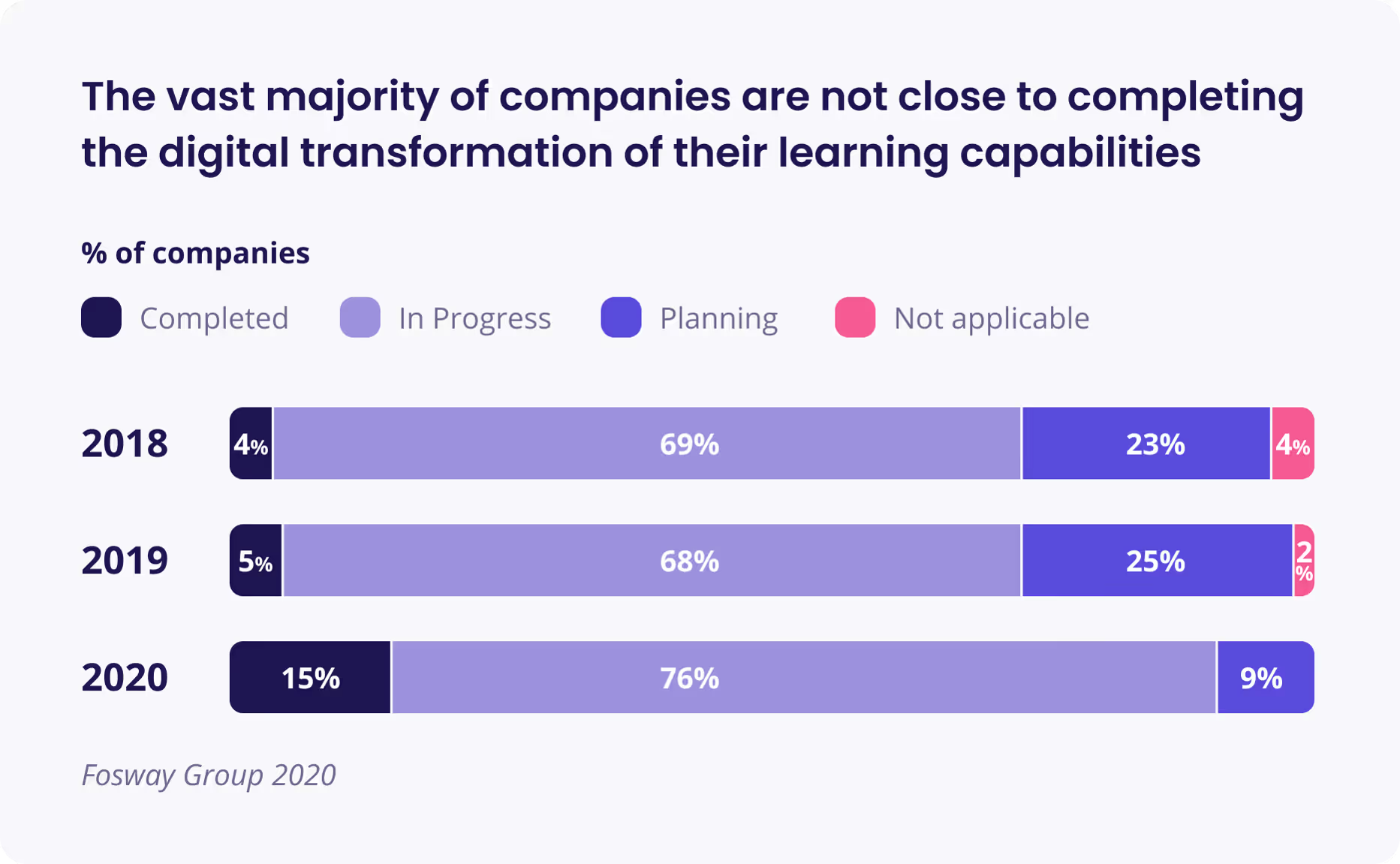
Identifying the kind of organization that you have to be in order to achieve your long-term aspirations is part of crafting your identity. It’s the answer to the question “Who do we need to be to reach our goal?” where the transformational potential of your culture resides. If it’s different from your current culture, then closing that gap will transform the organization.
There is one principle concerning cultural changes. Culture can’t be mandated. You can’t “order” people to “have each other’s back” or “share their mistakes”. You can, however, set the tone and the example.
For example, if you’d like to build a culture based on honesty, start with the leadership team. Once leadership reveals its missteps and gaps of knowledge, then people will be more willing to do the same.
Here’s a list of actionable steps you can take today to ensure a long-term culture:
Consider involving everyone in your company in a culture-building exercise, since it might provide a profound clarity of the values that the current practices of your organization are promoting.
Sometimes employees have a clearer picture of what their company values most, in contrast to what the company claims it values. That gap is one of the greatest devourers of strategies that go unnoticed. Remember this principle: when opposed, culture always beats strategy.

Adapting fast, creating a remarkable customer experience, and achieving great growth require engaged and inspired employees. In fact, Gallup 2020 Q12 Meta-Analysis finds a direct correlation between employee engagement and business performance measures such as profitability, employee turnover, absenteeism, safety incidents, and others. The differences between organizations that leverage their people and those that don’t are significant.
Employee satisfaction correlates strongly with the values that are advocated in the organization’s culture. Deloitte's Global Millennial Study indicates that millennials are not satisfied with the way employers address societal issues within the organization and outside of it. In contrast, the pandemic has increased the resolve of the people and their willingness to become forces of change. Thus better communication practices and greater employee involvement become necessities.
Throughout the whole organization and all of its practices, consistency is the key. True intentions become apparent over time. Every single decision of a company is a piece of communication and those pieces reveal the truth over time inescapably. Incentives, decisions on who gets promoted, behaviors that leaders model, hiring decisions, priorities in every matter, and every other piece of communication should be aligned and consistent.
Otherwise, strategy is unfocused, too many irrelevant activities are happening and people are getting too many mixed messages. They end up with scrambled priorities and waste too much time doing unimportant work. Decisions lead people and parts of the organization in too many directions.
So, what is the reference point that every decision inside the organization, no matter how big or small, should align with ultimately?
The vision is tightly linked to the identity of the company and is heavily influenced by the people who craft it and the people it addresses.
Your vision statement is in no way a strategy. It isn’t actionable on a day-to-day basis, nor should it be. Its function is to give direction, to work as a golden compass that aligns every decision with the ultimate destination. Your vision determines the goals that are worth pursuing and the challenges that are worth addressing. It’s what guides you in the infinite time horizon of business.
The most successful founders like Walt Disney of Disney, Sam Walton of Walmart or Reed Hastings of Netflix had a clear vision their organization was serving. To be more exact, they founded their organizations to serve their vision. Though unknown to them, their vision was guiding them to serve a more modern and revised responsibility of business, as given by Simon Sinek:
“The responsibility of business is to use its will and resources to advance a cause greater than itself, protect the people and places in which it operates, and generate more resources so that it can continue doing all those things for as long as possible. An organization can do whatever it likes to build its business so long as it is responsible for the consequences of its actions.”
Inspiring workplaces treat their vision statement as the driving force behind every decision. They don’t leave it hanging on a wall like a painting that nobody acknowledges. This makes a huge difference.
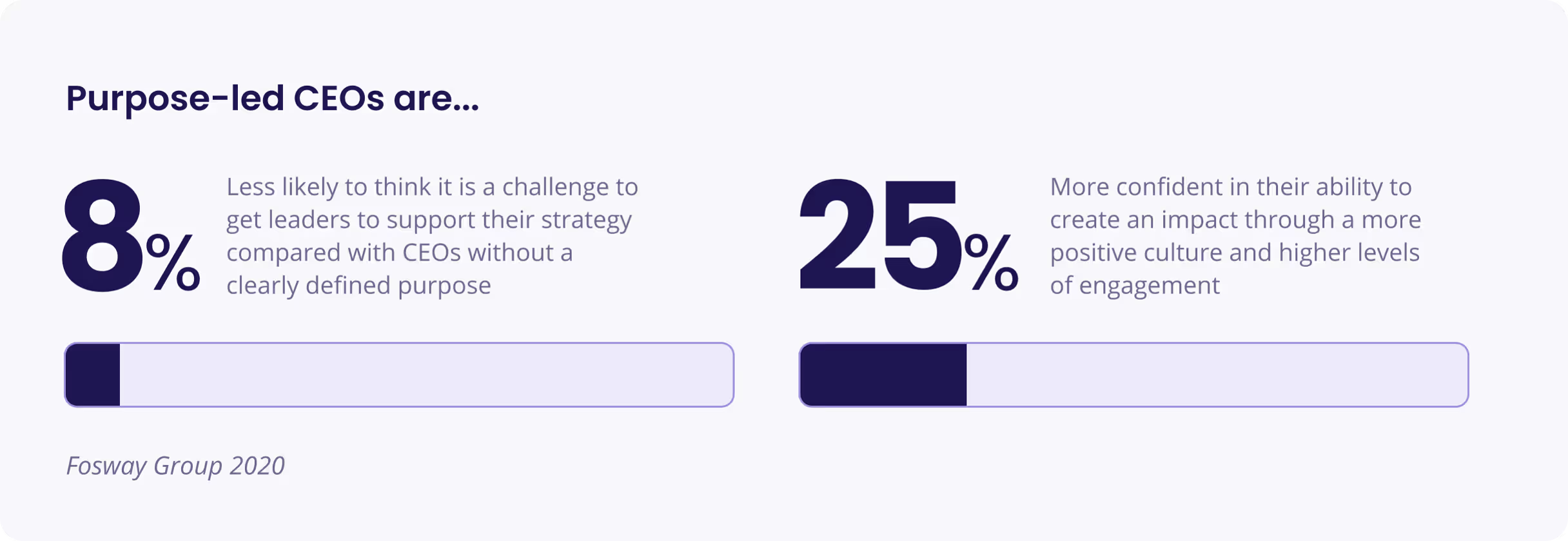
A clear vision that is understood and shared within an organization creates two remarkable effects.
The first one is alignment. It creates the broadest context within which every other decision falls. When it shines brightly like a beacon in the eyes of every member of the organization, then the overall trajectory of the organization along with its current strategy is more likely to be comprehended by everyone. In other words, when the vision guides the top leadership’s decisions, then people are more likely to understand the strategy when it’s communicated to them. And it should be communicated constantly.
The second impact that a clear vision provides is generated when it’s constantly reinforced. Highly purpose-driven organizations have transformed their work environment into powerhouses of purpose reminders. They have filled their offices with small, but powerful signals to remind everybody of the cause they work to advance and the ways they choose to pursue it. They create tangible links between the present moment and the future ideal. The language used inside the organization also supports this powerhouse and provides even more links with the future.
For example, Pixar has huge statues of their movie characters inside “The Steve Jobs Building”.

These reminders create a mental contrasting of the present with the future which, according to professor Gabriele Oettingen, elicits powerful responses from people. It inspires them and increases their engagement. People feel motivated and their morale is boosted. In other words, constant reminders of the vision of the organization raise people's will.
People need to feel like the work they do matters, they need to feel they advance a cause they believe in. When people work in an environment where they are constantly reminded of the vision and their values, they build teams aligned around those values. Each decision is consistent with the vision in an almost reflexive manner, it embodies the vision and the values of the culture. People feel inspired and fulfilled.
James Burke, the president of Johnson & Johnson, in 1975 initiated a process that would unfold in the next several years and result in a broad, internal awareness of the company’s vision (which they call the Credo). Seven years after that first meeting a crisis hit the company, the Tylenol crisis. People had died because they had ingested the Extra-Strength Tylenol capsules which were laced with cyanide. The spread of the poisoning and its cause were unknown.
J&J was insufficiently equipped to handle it. They had to make critical decisions and difficult trade-offs to protect their customers. Thousands of them. Some of them went against the recommendations of the FBI and FDA or their lawyers and cost them hundreds of millions of dollars in today’s value. There was no time for discussion, no system or way to align everyone in the company in such a short amount of time.
However, every single decision they made was consistent with their Credo. The awareness that was built over the previous seven years paid off. Everybody was aligned and the company navigated the crisis with unprecedented unity and a sense of direction. In just a few days they transformed from a pharmaceutical company into a public safety organization. The result was one of the greatest comebacks in corporate history and a golden example for handling corporate crises.
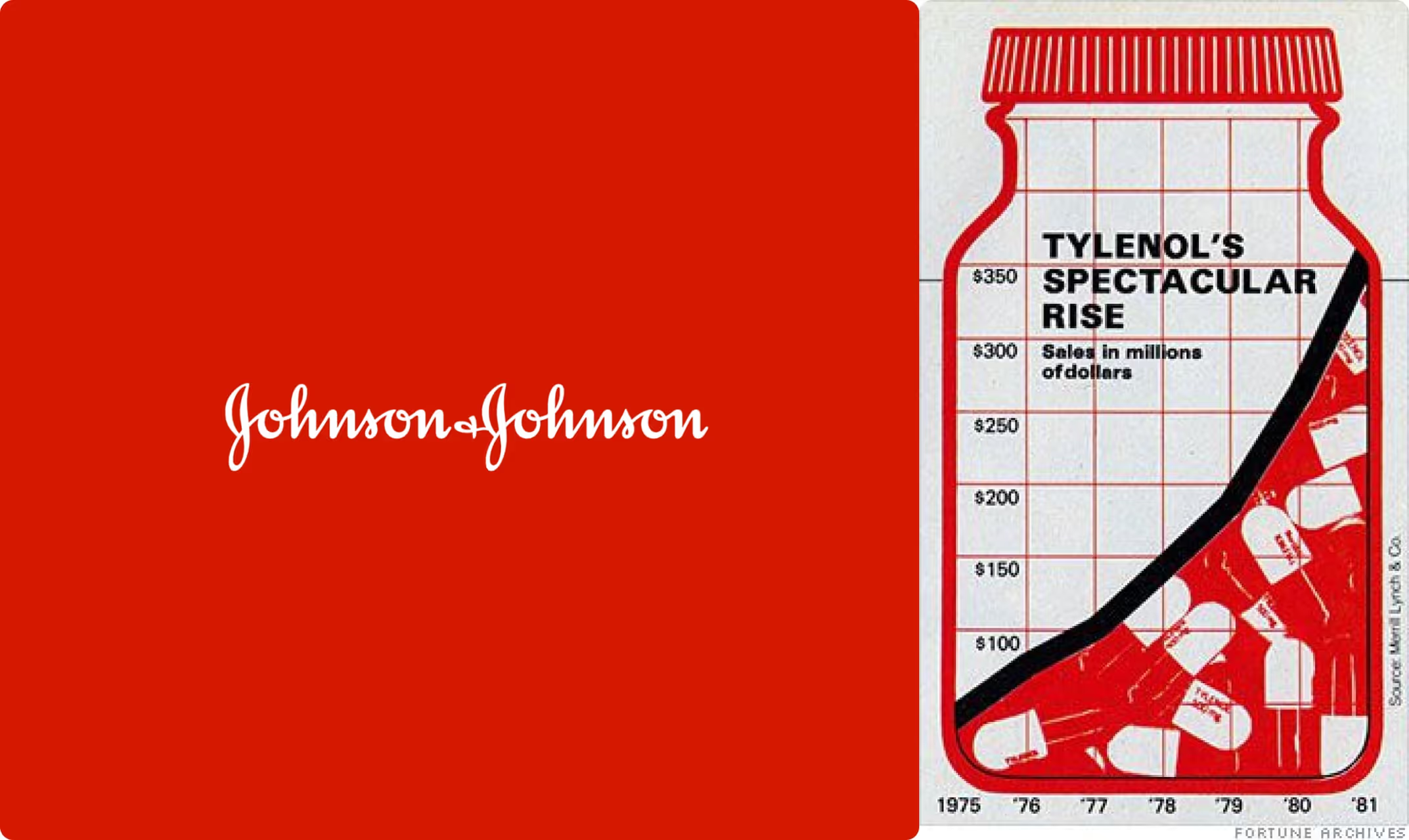
Your vision statement should sound more like a movement statement.
It should have optimistic and affirmative language, be inviting to everyone who believes in it, be indifferent to environmental changes like technological, political, and cultural, while at the same time is big, bold, and primarily focused on the benefit of others. That’s how it relates to people.
When discussing your vision statement, consider all the people that you should care about, while keeping the organization’s identity as the common denominator. They include your customers for sure, but not just them. Every single interaction point with your organization has the potential to create value for someone. This includes your suppliers, external partners, associates, employees, and everybody else interacting or affected by your organization.
Who are the people whose life gets better, because your organization exists? What are you bringing in people’s lives that make them better, healthier, easier, interesting, and more enjoyable? How are you different from the rest of your industry and the world? These are the questions that spark conversations that create causes worth fighting for.
Now that we know who we are and where we need to be, let’s explore how we can create a strategy.
Manifest your vision with strategy
Strategy is the path you choose. It’s the sum of all of your decisions, your ties, and the methods and actions you choose to pursue your goals.
Strategy is the decision you make on each crossroad and the path you take just as much as it’s the decisions you chose not to make and the path you chose not to take. It includes the tools you choose to take with you, the goals you choose to pursue, and the people that will accompany you in your journey.
It is not a Powerpoint presentation, even though 45% of strategies live in slides according to the attendees of the Strategy Fest 2021. Strategy is not a few-hundred-pages long document either or a closed discussion involving only a handful of people. It is a collaborative, learning process that leads to success.

According to strategy professor Richard Rumelt, all good strategies share 3 specific characteristics that he calls the kernel: a diagnosis, a guiding policy, and a set of coherent actions.
The vision of your organization will determine the relevant challenge that you should address. But the formulation of a good strategy demands a comprehensive definition of the challenge and its most important aspects. Thus, gathering the relevant information and data lies at the heart of the diagnosis.
Data by itself doesn't tell a story. It’s people’s interpretation of them that creates insights. In other words, diagnosing a problem relies heavily on people’s judgment. However, once the diagnosis has taken place, the problem is categorized and a reference of a congruent framework or analogy can be made. That way an approach tailored to that categorization can be adopted. At the very least, a set of actions will be deemed irrelevant or, even better, another domain of useful actions will be defined. Innovated solutions spring from a deeply insightful classification of the challenge.
A guiding policy consists of the first class of decisions that will determine your strategy’s approach. With the classification of the challenge as your criterion, you can evaluate the methods you are going to use to tackle the challenge. The guiding policy doesn’t consist of the goals, the actions, or the measures you are going to put in place with your strategy, rather it consists of the decisions that will serve as criteria for the consequent decisions that will determine those things. It is after all called “guiding”.
The guiding policy will dictate the next actions that will drive the strategy execution. It is the necessity to act that sharpens strategies and forces the initial, difficult decisions. Usually, it’s those initial decisions that determine whether resources, actions, and decisions align and form a great strategy.
Alignment by itself is a powerful source of advantage. If on every level and breadth of the organization decisions are not coordinated, they are either conflicting with each other or simply scattered around, just like the resources they are burning through. Coordination and coherence are underestimated and for that reason, they are often not addressed.
Analyze!
Every great strategic plan is preceded by efficient reporting and insightful analysis. This is hugely important when treating execution as a learning process since it demands efficient data collection and quick analytical methods. Today collecting data isn’t the hard part. Interpreting and reporting are. The strategic analysis needs two reference points: one inside the organization and one outside of it:
The key is that the discussion is grounded on hard data because its results become the only real reference point to anchor future changes. This shifts the focus to more data-driven and purposeful decisions.
Everything else is speculation. To maintain a dynamic and adaptable strategy, these conversations should occur in regular intervals with systematic and on-time reporting.
Having a conversation on strategy once a year serves only as a budget discussion, and usually with poor results.
The regularity of those discussions imposes changes in the way data is collected and analyzed. Calculating the current trajectory of the organization is not a novel idea, but scheduling regular discussions aiming at course correction is not a common practice either. Every decision concerning data collection and analysis should be heavily customer-centric. Even the metrics concerning the performance of your people and the organization should push your understanding of the customer further.
However, true insights on the value of the activities that drove recent results require one more reference point, your industry’s trends. The results of past performance should be analyzed also in the context of the whole industry’s results on the matter.
For example, was the 7% profit growth due to your strategic moves, or did the whole industry experience the same numbers? This kind of question will help you to differentiate the actions that gave you a competitive advantage from those that simply kept you on track or even held you back.
Involve your employees
People need to feel that they are heard and have contributed to deciding the changes they are expected to adopt. Involving in some way the vast majority of the workforce, you build ownership of the coming changes and it’s easier to foster accountability. Here’s how to create strategy as a team:
Goals and objectives should be framed as actions and alternative options. Determine the main subjects where choices are too difficult to reverse. Your strategy should develop around those choices.
This set of subjects along with the decisions you make are your guiding policy. Create and evaluate alternative plans, where different sets of decisions are pitted against each other based on their potential risk and returns.
In great strategies, execution commands most of the attention.
Force the attention and the discussion towards the execution. Build the momentum early and don’t allow the financial results to guide the conversation. Those results don’t indicate soon enough whether you are moving in the right direction or not.
For each activity determine the resources they require to be realized, from how many people will need to work on the project and hours spent to how much money you’ll need to provide.
Estimate the amount of progress each activity will produce and rank them according to this criterion. Now, acknowledge that you don’t have the resources, nor the manpower to execute on all of them and determine the opportunity cost of the corresponding resources dedicated to each activity. Again, it’s easier than it reads, but profoundly enlightening.
With your newly found knowledge, determine the best yielding activities with the lower opportunity cost and place the measures that directly track those activities. Remember, the measure should possess both qualities mentioned above. This is effectively what it means to put an excessive focus on execution when you formulate your strategy.
Alignment and focus throughout the whole organization will stem out of that activity.
Profit Centers vs Sinkholes
Not every cell is a profit center. Create a system, like a map, and discuss with your team which cells potentially are the most profitable and which are the least. This process can be practiced at every level of the organization from business units to product lines.
You’ll find that in the highest level of opportunity seeking, views do not differ. Judgments converge on the most profitable cells, just like they do on the least profitable cells. Uncertainty and divergence of opinions are concentrated in the middle of the spectrum. And that’s OK. Instead of squandering the resources on “maybes”, you reallocate them to the most profitable centers and starve the sinkholes.
These moves need to be decisive and immediate. Great strategic initiatives succeed because of the actions that led to rapid exploitation of the selected opportunities.
It’s important to determine whether you’re moving towards your goal or not. You need to establish measures. So, how do you know whether you’ve found a reliable measure?
Firstly, with a reliable measure, you should be able to predict the outcome of your activities based on the metric’s current value or progress. An effective measure informs you ahead of time whether you’re going to hit your goal or not. That way you can adapt your actions on time.
Secondly, an effective measure is one that you can influence directly. What is the use of predicting the outcome if you don’t know whether a change in your activities is affecting progress? Direct influence means real-time visibility of your progress.
Don’t mistake goals for measures. Goals inform you of the effectiveness of your previous actions and have no prognostic power.
Those two qualities - direct influence and predictability - are the marks of effective and reliable measures.
If you want to adapt your strategy, essentially you need people to change their behavior.
Two issues occur when people have to do things differently. The first is they don’t understand how their actions tie with the overall strategy, why they have to change what they were doing so far, which creates a sense of frustration and alienation from work. They end up being disengaged and unproductive.
The second is their inability to take initiative. Usually, employees have all the important information they need to make an informed decision, but they lack authority.
To achieve the change in behavior that will lead to the accomplishment of the new objectives you need to define the new actions that drive progress towards those objectives and empower employees to act on their own.
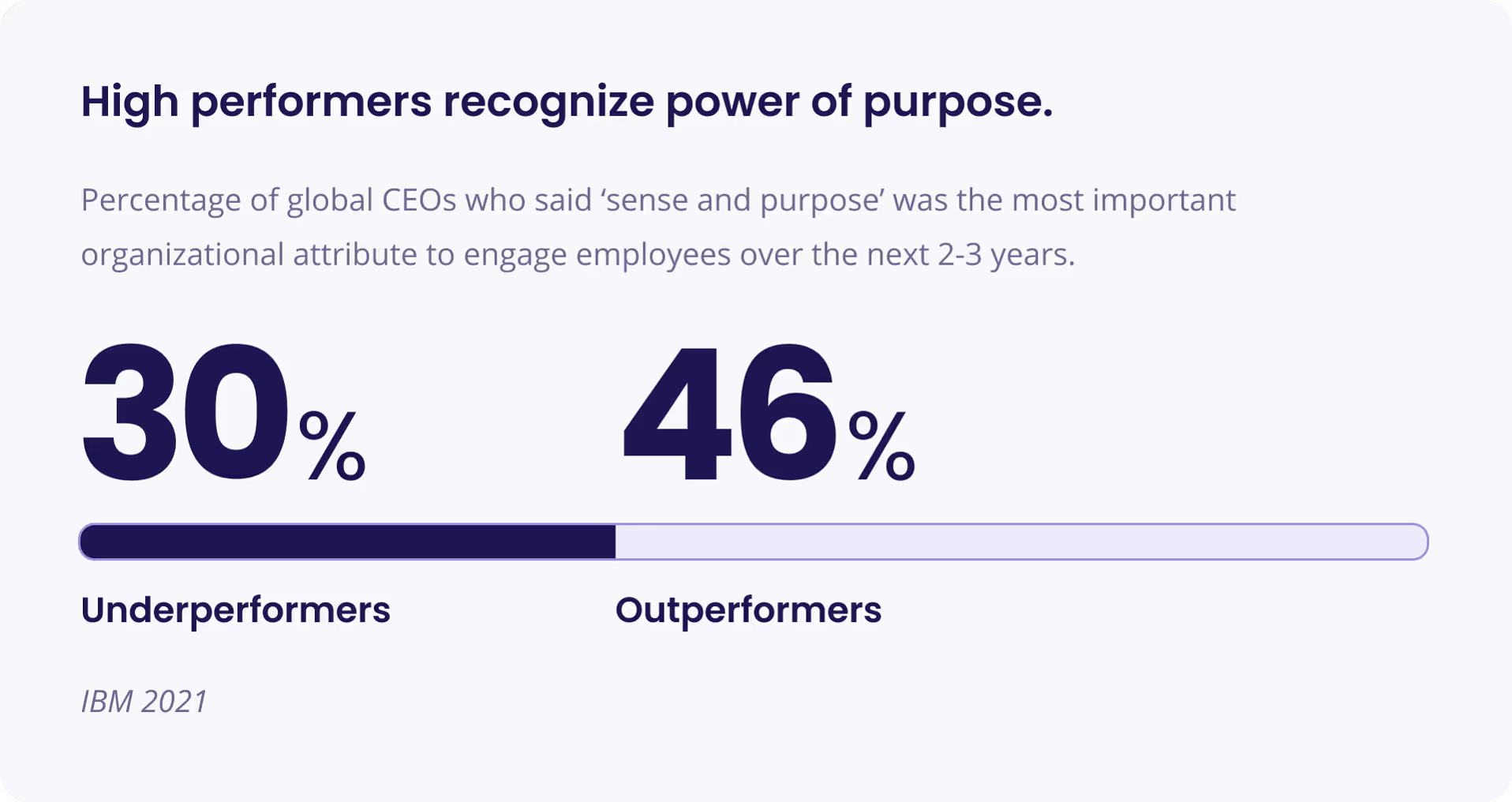
However, what is more important and often neglected is determining the actions that should be avoided. People are already working hard and trying to maintain momentum, putting more things on their plate without taking anything off is setting them up for failure.
People burnout, because they’re doing too much work.
Make tough decisions and force priorities. Each task doesn't contribute the same towards achieving a particular goal. Determine the most important ones. Limit yourself to the absolute minimum. Aim for one critical and most effective task, but never go beyond three.
Give employees the freedom to make decisions by removing information bottlenecks, including them in strategy creation, and building a strong vision that’ll resonate with their personal goals.
At the same time create a culture that rewards people who focus on non-trivial activities and lessen the burden of your employees by reducing or even eliminating shallow tasks.
Instead of weekly discussions on the current status of the project, initiate result-driven reporting for example. By eliminating or reducing the low output activities, you provide valuable space and time for your people to focus on what really matters.
Create open channels of communication between people and departments so it’s easier to acquire the necessary information and learn.
People crave learning and want to develop because 59% say it improves their overall job performance.
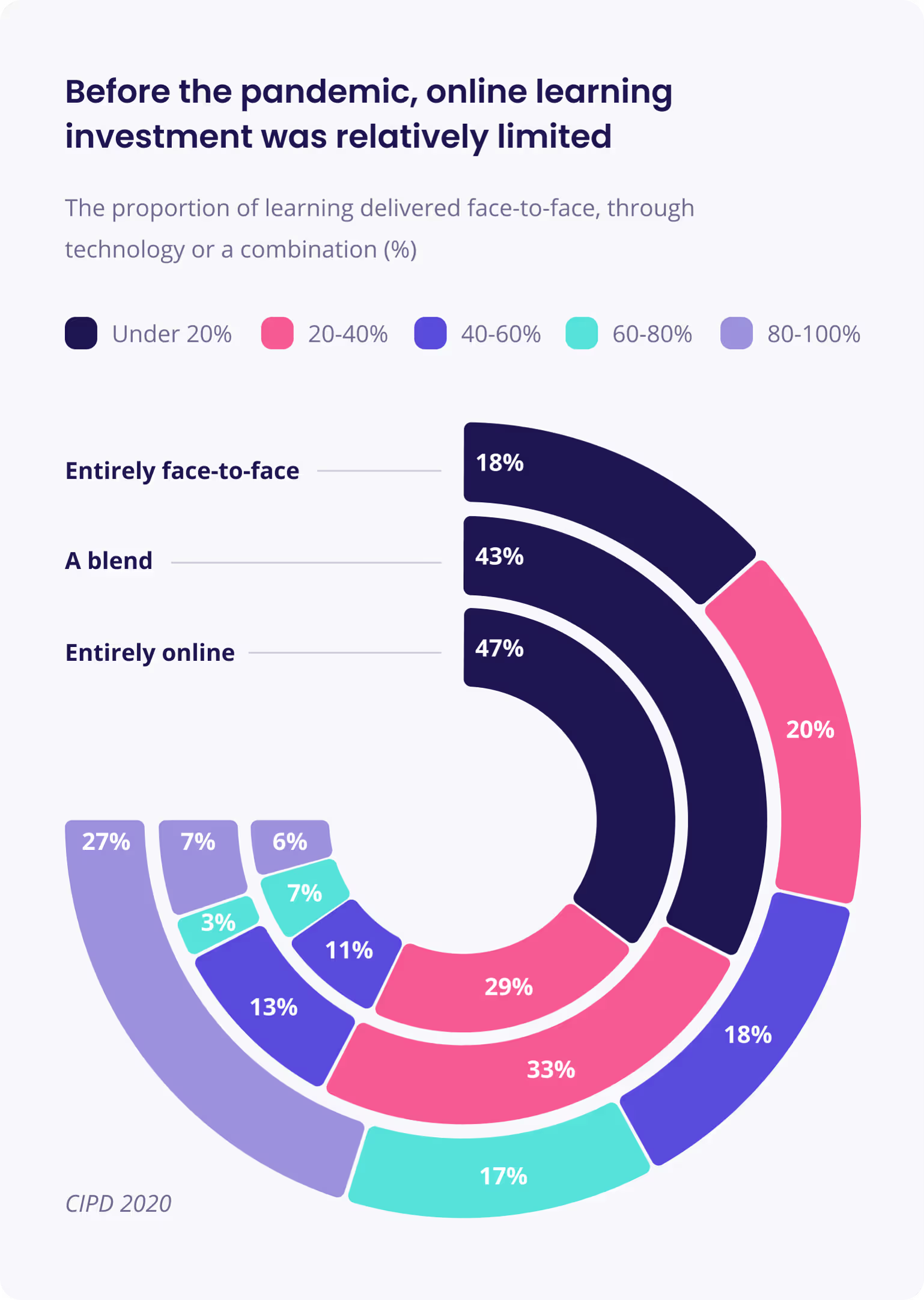
Create tentative work processes. Allow people to experiment and make mistakes. Focus on the quality of effort that people are showing, motivate them by encouraging noble failures and acknowledging when sheer luck is responsible for success.
Following the strategic management cycle with a primary focus on people results in higher productivity, engagement and effective execution. Strategy is a living, dynamic, iterative and collaborative affair. It requires careful planning and precise execution. Everyone in the organization has to participate, that’s why strategies cannot be dictated, only enabled.
They require a culture of learning and empowerment to happen. Leadership should put an emphasis on modifying structure and systems, but those are to be successful changes in the communication practices and employee’s participation should accompany them.
Cascade is all about alignment and transparency. Often employees don’t know their strategy. They don’t understand where they fit in the grand scheme of the business and it’s hard to get them onboard.
In our platform, organizations can put in their strategy plan and make it visible to everyone inside their organization. The progress of every individual goal, KPI, objective is visible and easily tracked. Reporting and updating them is instantaneous, while the whole plan can be modified and adapted fast and easily.
“We have seen retailers shaping their product lines, manufacturers expanding into new markets, universities pushing the bar up with new education programs that are shaping tomorrow's minds, through the simple power of clear strategy and determination in execution and team alignment,” adds Karim.
Organizations have their strategy plan in one place, where they can track its progress and quickly adapt it as they need. Every goal and KPI in one place. Seamless transition from strategy to execution. Genuine accountability.
